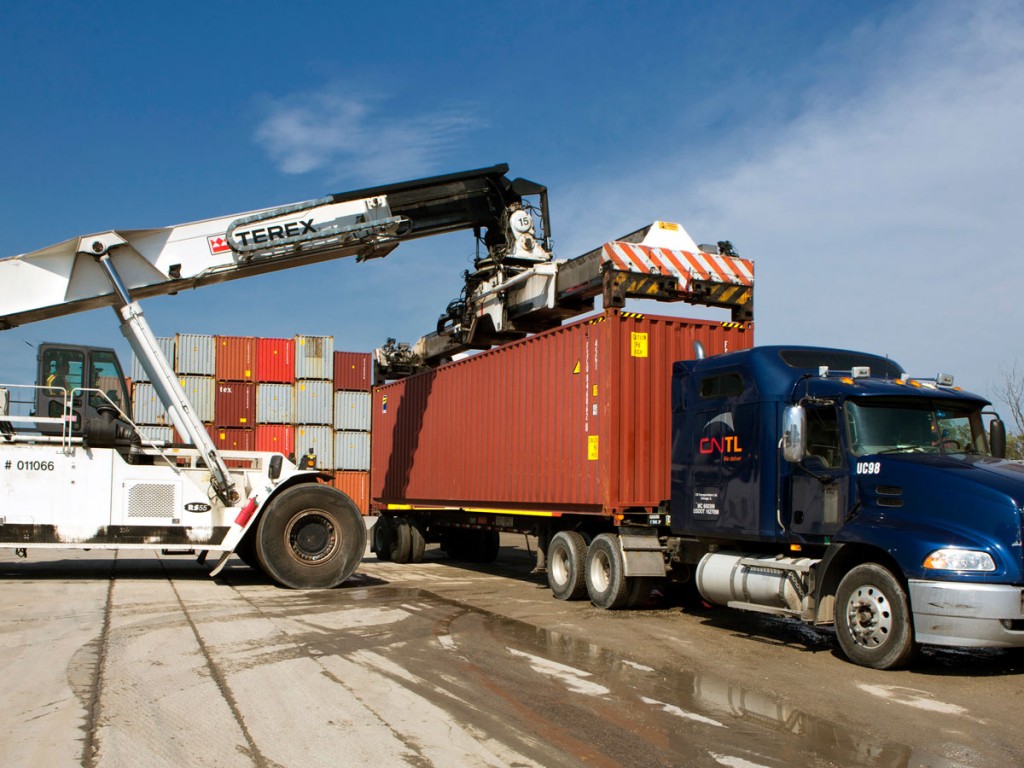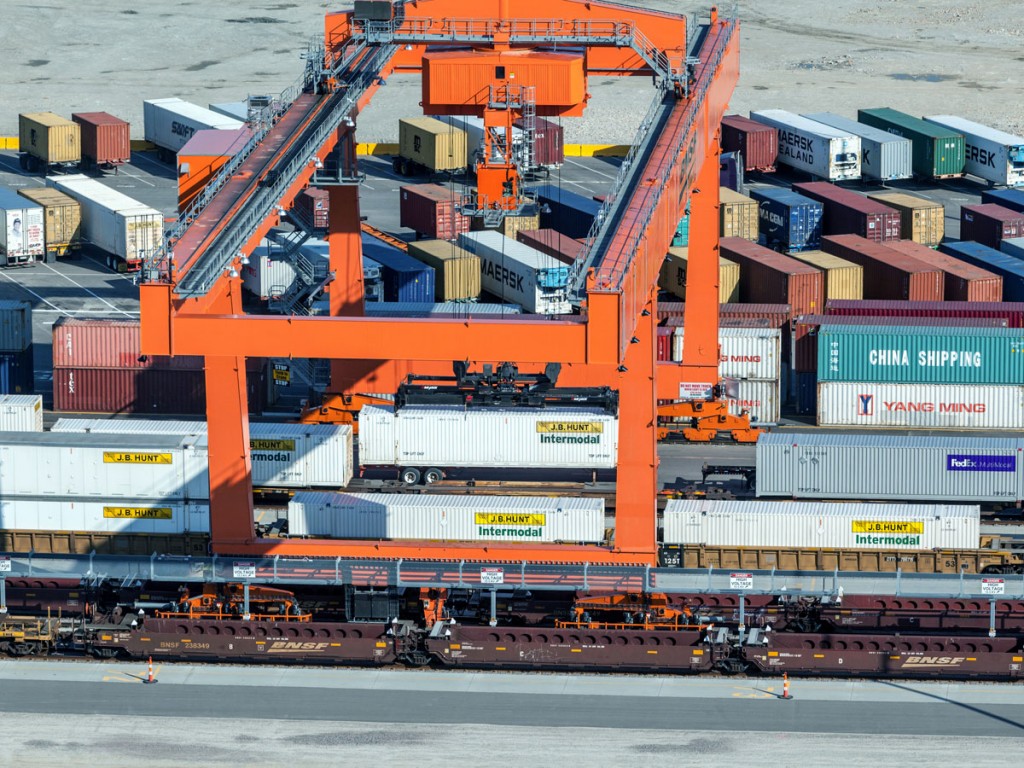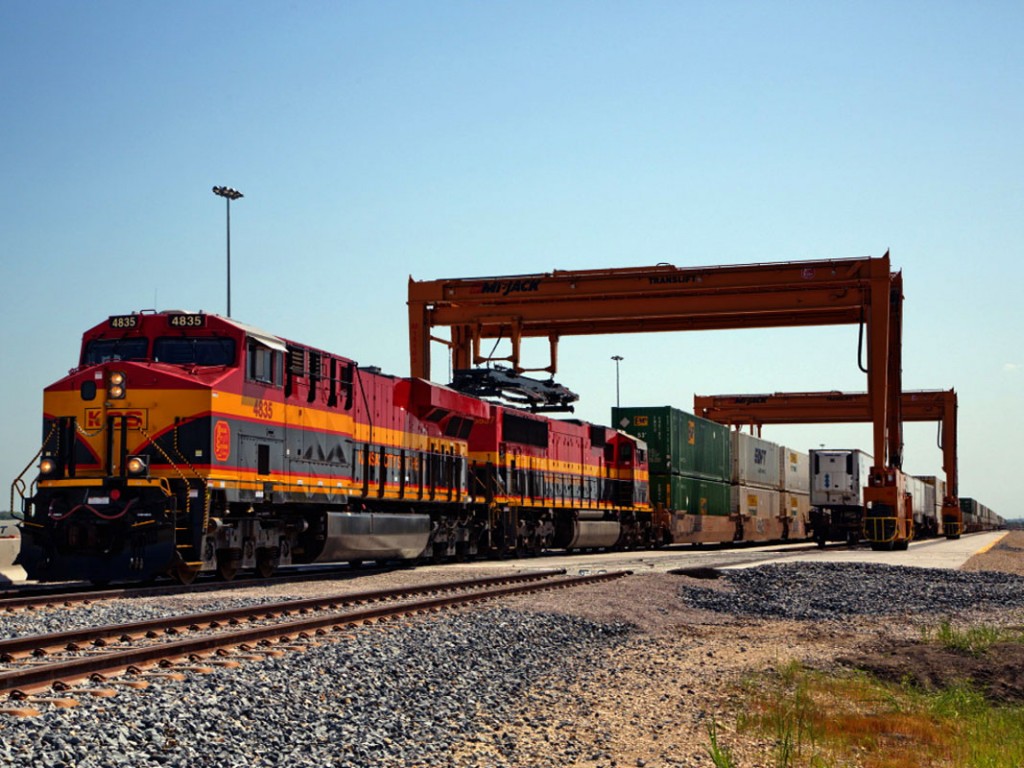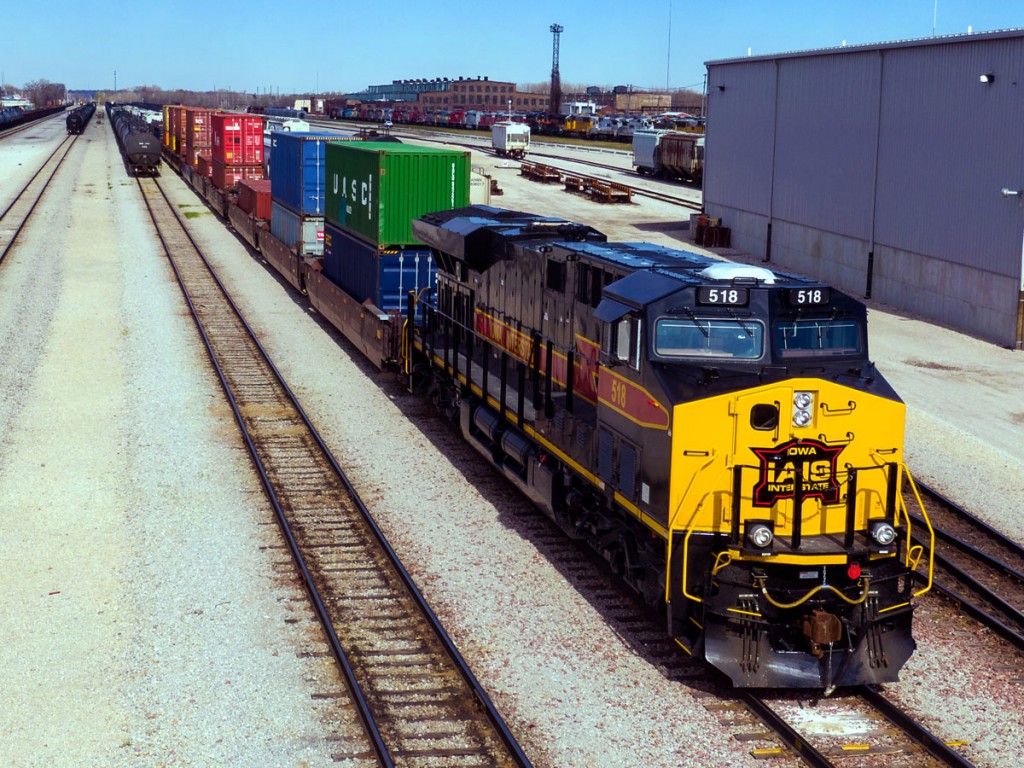With supply chains continuing to be impacted by the COVID-19 pandemic, intermodal hubs in the Midwest and beyond are offering shippers enduring opportunities for environmentally friendly cost efficiencies via the full spectrum of rail carriers, from Class Is to regional railroads to short lines.
Intermodal activity is back on the upswing, according to thoughts shared with AJOT by numerous railroad and association leaders.

“Fortunately,” she continued, “with the changes implemented two years ago through scheduled railroading, our operations are adept at adjusting to volume fluctuations, allowing our network to respond to customer demand and reliably meet their needs for sustained growth.”
With the core intermodal network of CSX serving the eastern half of the United States, the Chicago gateway serves as the railroad’s primary nexus for intermodal freight, moving through a pair of intermodal terminals, representing what Schild described as “the largest connection point in North America for the transcontinental movement of freight.”
In addition, CSX is developing a scalable, phased logistics park adjacent to its Northwest Ohio intermodal terminal in North Baltimore, Ohio, 40 miles south of Toledo.
“Strategically situated along our rail corridor between Chicago and the Northeast, the logistics park will provide value-added services for shippers, offering opportunities to reduce transportation costs and augment distribution footprints by seamlessly moving goods from train to truck to warehouse,” Schild said. “To complement the logistics park, CSX has enhanced our intermodal service offering with premium and expanded service between Northwest Ohio and East Coast ports, southern and northern California, as well as service from the Pacific Northwest.”
Norfolk, Virginia-based Norfolk Southern Railway has a long history of serving the Midwest via intermodal services as well.
“Intermodal hubs in the Midwest play a key role in supply chains every day, bringing in goods from overseas and then pumping them back out to domestic markets,” Chris Luebbers, assistant vice president for planning and yield for intermodal and automotive at NS, told AJOT. “This was no different as a result of COVID-19.
“Over time, we have seen the Midwest region continue to develop as centers for DC [distribution center activity], warehousing and freight forwarding for a wide variety of products, ranging from automobile parts to clothing and electronic goods,” Luebbers went on to say. “We anticipate that these markets will continue on this trajectory.”
Luebbers noted that an array of services connect Midwest markets to port hubs on both Pacific and Atlantic coasts, as well as major domestic markets throughout the East and South.
“Norfolk Southern’s presence in these markets stretches back for decades, but, over time, we have made significant improvements to our terminal and network infrastructure that have allowed us to grow with the changing demands of each market,” he said, highlighting Ohio terminals coming online at Cleveland in 2001 and Columbus [Rickenbacker Intermodal Terminal] in 2008; ongoing expansions and efficiency improvements in the Chicago area; and development of the Heartland Corridor project, designed to allow for double-stack operations on the fastest route between the Port of Virginia and Chicago.
Canadian National Railway officials see Midwest intermodal hubs playing an increasing role in COVID-19-impacted U.S. supply chains, according to Derbhla Dunne, senior manager for marketing innovation at Montreal-headquartered CN. U.S. Midwest terminals of CN handle import and export cargos to and from 15 Canadian and U.S. ports, including New Orleans and Mobile, Alabama, in the U.S. Southeast.
“Global supply chains were being disrupted before COVID-19 appeared,” Dunne told AJOT. “The U.S.-China trade war had companies rethink their globalized supply chains as they questioned their heavily outsourced networks.
“COVID-19 has certainly helped this thought process along,” she continued. “As companies make the U.S. Midwest a larger component in their supply chain, CN is well-positioned to participate in the growth of many of these U.S. Midwest markets given the number of terminals we have to serve them.”
Dunne noted that CN has been serving large-volume hubs such as Memphis, Chicago and Detroit for many years, adding, “Starting in 2012, in an effort to help our customers get closer to their end markets, we began building new import/export terminals, targeted to local markets, like Joliet, Illinois, and Duluth, Minnesota. We have partnered with large BCOs [beneficial cargo owners] like Ashley Furniture, Menards and ADM [Archer-Daniels-Midland Co.] to build successful boutique terminals in Arcadia and Chippewa Falls, Wisconsin, and Decatur, Illinois. We have collaborated with best-in-class regional railroads, like INRD [the Indiana Rail Road Co.], to access Indianapolis and with Class 1 railroads to build Ohio Valley access, via NS and CSX.
“As manufacturing production shifts from high-cost China to Southwest Asia, ocean services become logistically cost-effective to East Coast ports by shipping through the Suez Canal and transshipping in Europe, rather than crossing the Pacific and using expensive rail to Eastern U.S. and Central Canada,” Dunne said.
Calgary, Alberta-headquartered Canadian Pacific Railway is the other Canada-based Class I, serving U.S. Midwest intermodal terminals in Minneapolis and Detroit, plus two facilities just south of Chicago.
Fort Worth, Texas-based BNSF Railway Co., which offers North America’s largest freight railroad network, with 32,500 miles of track in 28 states and three Canadian provinces, operates 25 intermodal facilities.
BNSF Midwest hubs include the 638-acre Logistics Park Chicago, in Elwood, Illinois, touted as home to the nation’s largest inland port, with such key customers as The Home Depot, IKEA, Mars/Wrigley, Samsung and Walmart; the 443-acre Logistics Park Kansas City, in Edgerton, Kansas, with major customers including Amazon, Excel Industries and Kubota; and the 400-acre Logistics Park Alliance, in Haslet, Texas, north of Fort Worth, which counts JCPenney, Michaels and Walmart among top BCO customers.

“Throughout the pandemic, Logistics Park Alliance, Logistics Park Chicago and Logistics Park Kansas City have served our customers as efficient connections to help move shipments through the West Coast ports via rail to Midwestern destinations,” Tom Williams, BNSF’s group vice president for consumer products, told AJOT.
“Over the course of the pandemic, demand and import share has increased at the West Coast ports due to the speed and flexibility they offer versus the East Coast ports,” Williams continued. “Our logistics parks were instrumental at the beginning of the pandemic in helping us meet the demand and deliver personal protective equipment and essential goods to the Midwest from the West Coast ports.
“As states began quarantine measures, these facilities were a vital link to the Midwest markets as e-commerce sales surged,” he said. “They continue to be important as we are now experiencing peak-like volumes from a combination of online shopping and parcel service, as well as consumers returning to brick-and-mortar retail.”
Williams said BNSF’s logistics parks will remain integral to the railroad’s key strategy to address evolving needs of customers, adding, “Located in the middle of the U.S., they provide a streamlined supply chain solution that connects manufacturers and retailers to their Midwest markets.”
Omaha, Nebraska-headquartered Union Pacific Railroad brings intermodal volumes from U.S. West Coast ports to several facilities in the Midwest, including Council Bluffs, Iowa; Kansas City, Missouri; Dupo, Illinois, across the Mississippi River from St. Louis; Marion, Arkansas; and four facilities in the Chicago area, plus five Texas locations.
In an Aug. 26 letter to customers, Kenny Rocker, UP’s executive vice president of marketing and sales, said UP is in the process of consolidating its Houston area intermodal operations at its Settegast yard, away from its Englewood yard, to “further improve the network fluidity.”
Rocker said that, nearly two months into the third calendar quarter, UP volumes had risen to above pre-pandemic levels, commenting, “In July, we saw a 10 percent increase in overall volume, with intermodal growing the fastest from a quick rebound in truck demand as retailers began to replenish their inventories.”

Meanwhile, the Kansas City Southern Railway Co. is reporting a rise in activity at its 362-acre intermodal terminal located 30 miles northwest of Dallas.
“KCS’s Wylie, Texas, intermodal terminal has seen large growth since June after early second quarter volume declines, and we have seen a large spike in retail and package business for major companies,” said C. Doniele Carlson, assistant vice president for corporate communications and community affairs at Kansas City, Missouri-based KCS.
“The other Midwest intermodal hub KCS serves, International Freight Gateway, or IFG, is in Kansas City, Missouri,” Carlson told AJOT. “We have not seen a large spike in volumes there.”
Offering a broader perspective, Joni Casey, president and chief executive officer of the Intermodal Association of North America, sees domestic moves leading the way in this year’s pandemic-affected intermodal activity.
“Domestic intermodal volumes continue to increase, aided by moves of essential items, such as PPE [personal protective equipment], food and household staples,” Casey told AJOT.
“E-commerce is also a big driver of domestic moves in both containers and trailers, as OTR [over-the-road trucking] capacity is tightening in some markets,” she added. “Midwestern distribution hubs are already key links in the intermodal supply chain, so specific impacts of COVID-19 are difficult to predict and, in large part, depend on the future path of the virus.”

According to a July 30 IANA report, total intermodal volume was down 9.3 percent in the first half of 2020, compared with the January-to-June period of 2019. The report projects a drop of about 10 percent in total intermodal loadings for the full year, thanks largely to pandemic-related shutdowns and high tariffs. But domestic container volume slid just 2.5 percent in the first half and appeared poised for an upswing.
“The recent surge in domestic container and trailer volume is expected to continue for the rest of the year,” Casey said. “Some Midwestern links in the supply chain are dedicated to supporting online purchases, in particular those that provide support to parcel carriers.
“These facilities also support 3PLs [third-party logistics companies] who provide services to internet and brick-and-mortar retailers,” she continued. “An overlay is the increased amount of transloads, as depleted inventories are being restocked at both inland facilities and on the West Coast.”
Intermodal activity provides vast opportunities, including beyond the big Class I railroads, according to Chuck Baker, president of the American Short Line and Regional Railroad Association.
“It is almost always going to be less expensive – and more environmentally friendly – to use intermodal versus entirely over-the-road trucking,” Baker told AJOT.
Baker added that, with the advent of precision scheduled railroading initiatives, railroads are delivering increasingly consistent, reliable intermodal services. This enhances the attractiveness of such offerings for Class Is and the smaller railroads that connect with them.
“Short lines, by their nature, are kind of always hustling for the next piece of business,” he said, “so I know there are a lot of short lines that would like to get into intermodal. There’s a huge opportunity for intermodal to grow for decades going forward.”

No doubt the busiest Class III short line in terms of intermodal activity is Pacific Harbor Line, which operates on 18 route miles providing BNSF and UP links to the Western Hemisphere’s biggest containerport complex of Southern California’s ports of Los Angeles and Long Beach.
Meanwhile, Class II regionals heavily involved in intermodal business include Florida East Coast Railway, which runs for 351 miles between Jacksonville and South Florida’s seaports, providing a competitive alternative to Interstate 95, and Montana Rail Link, which bridges much BNSF traffic across Montana.
Among other Class II regional carriers engaged in daily intermodal service is Cedar Rapids-based Iowa Interstate Railroad Ltd., which handles cargo along the 500-mile stretch between ramps at Blue Island, Illinois, just south of Chicago, and Council Bluffs, Iowa, across the Missouri River from Omaha, Nebraska.

Iowa Interstate’s vice president and chief commercial officer, Carrie Evans, said the regional railroad operates in collaboration with steamship lines in positioning of equipment and hands off boxes loaded with agricultural products to Union Pacific for export via West Coast ports.
Iowa Interstate handles both domestic and international containers and furnishes an increasingly valuable alternative to I-80 as trucking capacity tightens, she said.
“We’re more nimble and really engaged with the customer,” Evans told AJOT. “We’re good at providing the first-mile, last-mile service, as we get containers closer to end markets, reducing drayage miles.”
Another Iowa-based railroad – Waterloo-headquartered Class III short line Iowa Northern Railway Co. – initiated in late 2019 an internationally focused intermodal service through the newly developed Butler Intermodal Terminal, operated by Watco Companies LLC in Shell Rock, Iowa. The service promotes a cost-competitive solution that reduces long-haul truck miles.
UP interchanges with Iowa Northern with eastbound intermodal shipments from the ports of Los Angeles and Long Beach, while the service helps ensure a consistent supply of international containers in Central Iowa for export loads to the West Coast.



